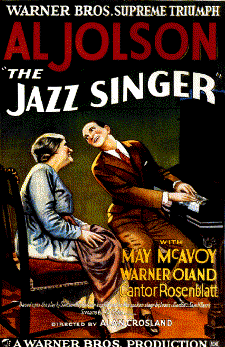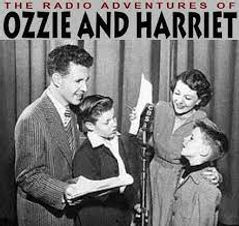
History and Purpose of Music Videos
History of Music Videos
It is believed that Thomas Edison made his first sound recording in 1877. This invention of Edison revolutionized the way of listening to music. When motion picture technology was developed in the 1890s, it was immediately applied to music. Some think the main music video was made in 1894 by Joseph Harsh and Edward Imprint, who turned a recording of their "Little Lost Child" tune into a moving slideshow and promoted it as an "delineated melody.". Over 2 million copies of the sheet music of "Little Lost Child" were sold, despite the fact that the average American did not yet possess the necessary equipment to play a recording of the song.
The first films with sound, known as "talkies", were also musical in nature. The first film to have sound and picture synchronized was "The Jazz Singer" in 1927, in which recording star Al Jolson starred as an actor and sang.
The use of song lyrics as the basis for a short "scene" featuring the performer and other actors, “music shorts”, was in the 1929 Bessie Smith film St. Louis Blues. These "shorts" will play along with feature films and even other forms of entertainment such as live dancers, musicians and comedians, because the concept of the current "cinema" where everyone attends one movie has not yet been established. With the advent of television, new possibilities of sound and image expanded. At the conclusion of The Adventures of Ozzie and Harriet, a young Ricky Nelson began to sing and the audience demanded more.
Up to this point, videos made by musicians were almost always an add-on to other programs. Artists appeared as visitors to network programs at fragments of theatrical performances, but musical recordings did not have their own long-term place. However, that was before August 1, 1981, when MTV debuted.
MTV's music video programs, which aired 24 hours a day, allowed musicians and their fans to fully explore sound and image. MTV has changed the way artists use the digital space to broadcast their work to a wide audience.





Music Video Purposes
Promotional
The main purpose of a music video is to promote and showcase an artist. Artists and record companies benefit from this by increasing their profits. In order for people to share and watch it again, it must be interesting and memorable. Views, charts, and radio listening are all ways to measure success. A music video won't get many views if it's boring or poorly made. It takes a lot of visuals to make a song interesting to a lot of people; otherwise, they might not pay much attention to it.
Income increase
Recordings can help promote artists if they are valuable and important enough. To boost your sales, they can also help sell merchandise or boost the artist's profile. When music videos are shown on music TV channels or a song is used in an advertisement, the artist receives royalties.
Expansion of outlets
Music TV channels were once the preferred way to watch music videos, but this method is now somewhat outdated. Almost every music video can be found on the internet, and it won't take long to find what you're looking for. Nowadays most of the artists can be found on VEVO. The music videos are available for purchase on DVD or through iTunes. YouTube and other platforms help reach a larger audience.
Synergy
When an artist incorporates something they want to promote into a song and music video, they achieve synergy. The most common way synergy is achieved is when an artist writes a song that suits a particular scene or movie plot. The song is then released as a promotional single with the film's soundtrack as the cover. If a music video is being filmed, a cut is made from clips from the film.
Producer Strategies
Major label producers
Usually partner with popular artists. Producers usually have significant budgets that they can use to promote the artist through tours and music videos.
Independent label
Are less well-known than major record labels. When it comes to promoting an artist through tours, merchandise, music videos, and other means, they usually have smaller budgets. Since they have creative experience, the producers of these record labels are willing to use less experienced directors to create a music video. Because they know the audience will be small, the directors of these videos are willing to try new things.
Self-producers
People who make their own music and are artists. Most of them are unsigned, so they use the video as a marketing tool to gain fans and exposure, which can lead to a label deal. This is usually what they do because they don't have a lot of money and can't afford to hire a big team. In most cases, self-producers like to have artistic control over the visual content, which sometimes shows future record companies their work.












Principles
There are many different strategies for producers and each producer will use different principles depending on the music, artist or style.
Image
The image of another artist can significantly affect their success. Sometimes it depends on the style of the music, and sometimes it's a direct result of an interest group. In the course of an artist's career, there are times when he may become disillusioned with the style of music he is used to and want to change it. Fans may take this joyfully or negatively, which may affect the further musical career.
Narratory
Sometimes producers use music video narration to increase fan following and capture the attention of the audience. The moment people watch a music video, they are generally intrigued by the master or storyline. Because they know the artist's fans will be interested, the producers use this to their advantage and put on expensive performances and stories.


Controversy
Controversy arises in music when its content touches on issues of violence, sexuality, religion, or obscene language.Because they know it will attract more viewers, some producers purposefully produce music videos with a sense of controversy. Even if half of the audience doesn't like the idea of a music video, it's still advertising.

Andrew Goodwin's Theory
In 1992, Andrew Goodwin published a book called Dancing in the Distraction Factory. The theory is that music videos are often built on a link between the visuals, the song, and the artist. There are a number of codes and conventions for music videos; many common features of many music videos.
1. All music videos have certain genre characteristics, depending on the genre of
music.
Goodwin suggested that there is a connection between genre of music and genre visuals of music videos. Also the live performance element of the music video gives viewers a sense of authenticity that the band is playing the music live. This means that the visuals of the music videos will be styled to match the genre of the music.
2. Relationship between the visuals and the lyrics.
Most often there is a connection between visuals and lyrics. This means that the visuals almost exactly reflect what the lyrics are saying. Illustrative visual effects are seen in narrative music.
3. Relationship between the music and the lyrics
There is a connection between music and lyrics. The tone and atmosphere of the visual reflects the music. This means that the atmosphere and mise-en-scène of a music video scene is related to the melody of the song.
4. The demand of the record label will be evident in the video.
The record company's demand will be evident in the video. The record company has a certain amount of control over the musician. It even counts how the artist is represented in the media up to the record company. Record company requirements will include: the need for a large number of close-ups of the artist and the artist can develop motifs that recur in their work. Close-ups are often used to sell the artist and show emotion.
5. Artist iconography
Artistic iconography ensures that artists dressed in a special way across the video range. The artist dresses to look unique in order to stay up to date. It also allows the artist to be easily recognized by the audience. Moreover, it enhances the stellar factor. In addition, the star image of the artist develops and grows over time and becomes canonical.
6. The notion of looking
Music videos require viewers to be versatile. Voyeurism is used to increase video attractiveness. Because of this, most music videos follow this theory, as voyeurism is successful in helping sell music. Andrew Goodwin states that women will be objectified, often through a combination of camerawork and editing, with fragmented body shots emphasizing a sexy image.
7. Intertextual
It essentially means that it has a type of link to another media which could be film, television or music to pay homage to another media text. Intertextual means that it includes other types of media. Such as: movies, TV programs, animation, etc. Intertextuality is often used in humorous videos. His references are often symbols to represent the audience's ideas.




Due to investigated research, I can rely on some presented principles and purposes in creating my music video. Trough knowledges I gained, I can more accurately choose the strategy and work plan I need to be able to skillfully demonstrate the idea and main concept, as well as to reach the desired audience in my project. In my reassert I was amazed by the fact what first sound recording was created by Thomas Edison and what only at the end of 20th century music videos became a independent tendency in musical industry.
Sources:
Media. TeachRock. (n.d.). Retrieved January 1, 2023, from https://teachrock.org/media/
Music video production: Purpose of music videos. Shane Barr. (n.d.). Retrieved January 1, 2023, from http://shanebarr-nwrc.weebly.com/year-1-assignments/music-video-production-purpose-of-music-videos
Jilly Hafenrichter Follow. “Andrew Goodwin Music Video Theory.” Share and Discover Knowledge on SlideShare, https://www.slideshare.net/mrshmedia/andrew-goodwin-music-video-theory-63564120.





